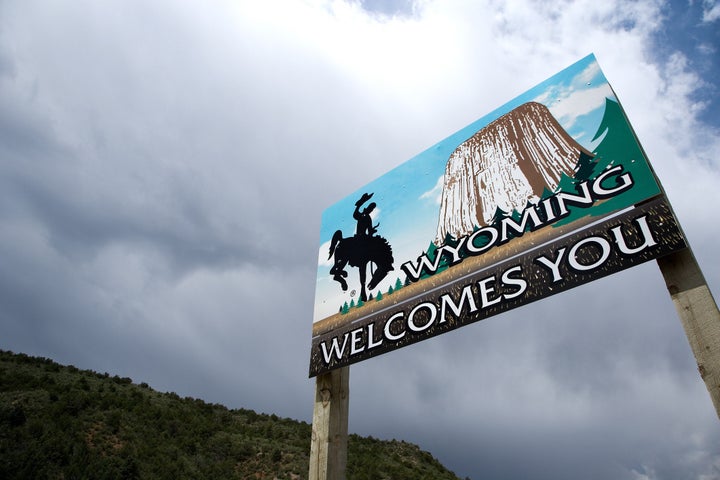
I once lived within short walking distance of a state line and had a friend who lived right on the avenue that was the dividing line. That meant that she could be cutting her lawn while watching her neighbor cut his lawn in a different state. Living on a border loses its novelty after a while, but visitors always find it intriguing. It's like they expect the Berlin Wall or some other concrete demarcation of abstract political divisions.
That's because of cognitive mapmaking, which is different from regular mapmaking. Cartographers measure and plot distances over land and water, but when we make a mental map, we rely on categories to help us keep things straight. States are one of these categories. For example, we think of Spokane and Olympia as psychologically close because they're both in the state of Washington, even though Olympia is actually much closer to Portland, Ore. The mapmaker in our neurons favors the category over actual proximity.
What are the implications of this bias? Two psychological scientists at the University of Utah (in Salt Lake City, in north central Utah) wondered if our mental maps might skew the way we think about risk of natural disaster. In other words, if we think of state borders as physical barriers, do we also imagine, irrationally, that these borders protect us in some way? The scientists, Arul and Himanshu Mishra, decided to test this idea in the lab.
They recruited a large group of volunteers from 32 states and asked them to imagine building a mountain home in the Pacific Northwest, either in North Mountain Resort, Wash., or in West Mountain Resort, Ore. While they were contemplating the choice, the volunteers received a news alert about an earthquake, but the details differed: Some heard that the earthquake had hit Wells, Wash., 200 miles from each vacation home. Others heard that the earthquake had hit Wells, Ore., also 200 miles from the mountain homes. They were warned of continuing seismic activity, and they were also given maps showing all three locations, to help them make their choice of vacation homes.
Their choices revealed a clear border bias. Even though they knew that both homes were exactly 200 miles from the disaster, home shoppers perceived in-state home locations to be significantly riskier than out-of-state locations. In other words, they disregarded actual distance and made their risk assessment based on political borders that have nothing to do with seismology.
This is irrational, of course. So the Mishras decided to look at the question a different way, in this case involving environmental risk. They recruited volunteers from Salt Lake City and told them about a radioactive waste facility being built 165 miles away. They were warned that radioactive waste, if not contained properly, could contaminate soil, water and air for hundreds of miles. Some volunteers were then told that the waste facility would be in Sevier Lake, Utah, while others heard that it was being constructed in Spring Creek, Nev.
So far this sounds a lot like the earthquake experiment, but the scientists added a twist by giving the volunteers different maps. Some saw a map in which the Utah-Nevada border was drawn as a thick, dark line, while for others the border was a light dotted line. The idea was that the dark line would reinforce the biased notion that borders are impermeable, and that states are therefore meaningful categories to rely on for decision making.
And that's just what happened. As reported in the online version of the journal Psychological Science, when the radioactive waste was being stored in neighboring Nevada, residents of Salt Lake City perceived much greater risk of contamination if the border was a light dotted line. In their minds, that light, sketchy border minimized the distinction between Utah and Nevada, and thus increased perception of risk. The thick, dark border offered psychological protection from radioactivity.
Such irrational risk assessment has practical implications, the scientists note. Most obviously, disaster warnings would be much more effective if they emphasized actual distance rather than abstract political demarcations. Tornadoes, hurricanes and other perilous weather don't honor state lines. But in addition, citizens would be able to make better decisions about insurance coverage if they were given more meaningful information about the proximity of risk. Finally, citizen activism could be more rationally organized. Often, citizens will protest toxic waste dumps and other health threats only within their state borders, feeling immune to identical risks that are in neighboring states but even closer by. Understanding border bias could lead to more sensible and effective citizenship.